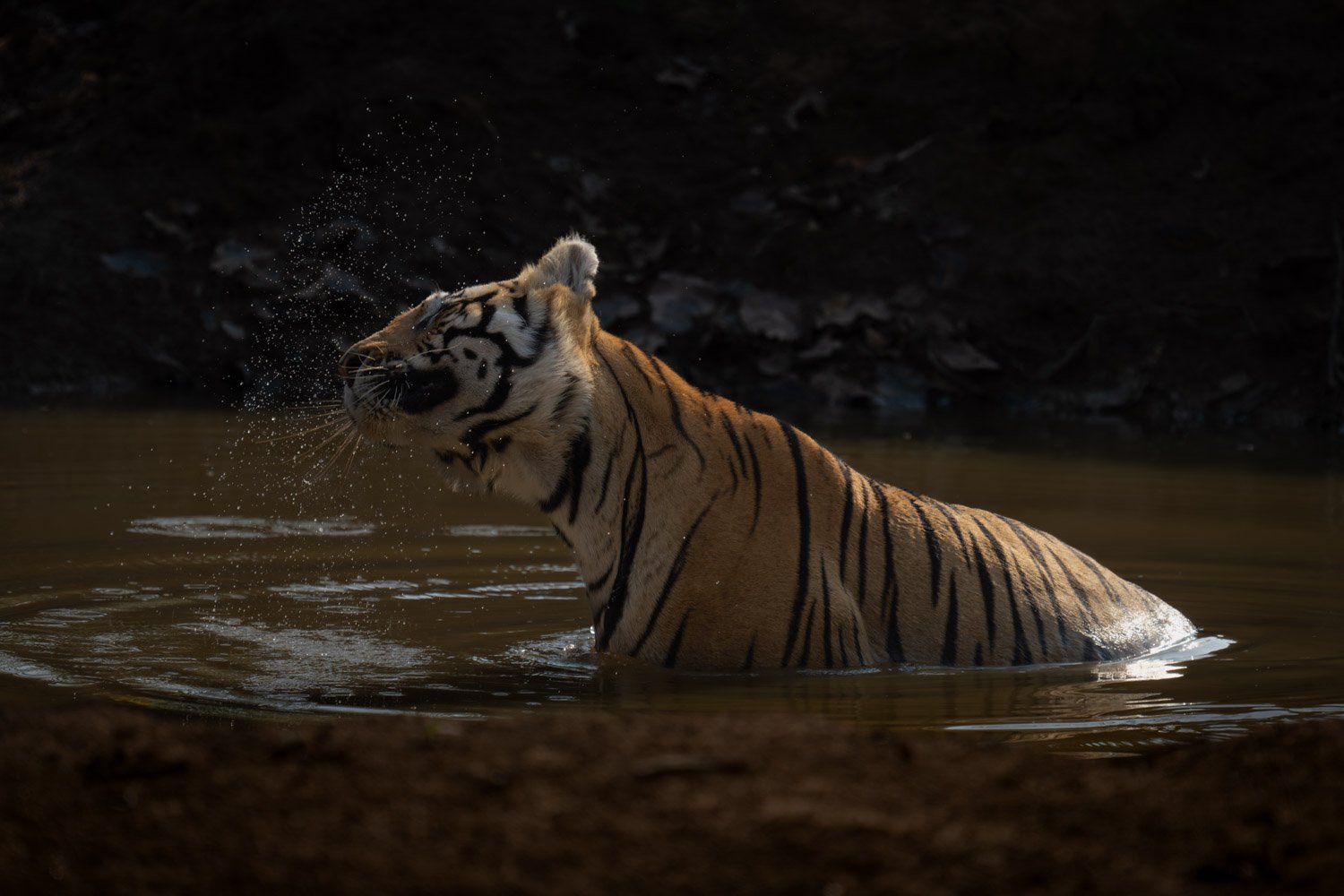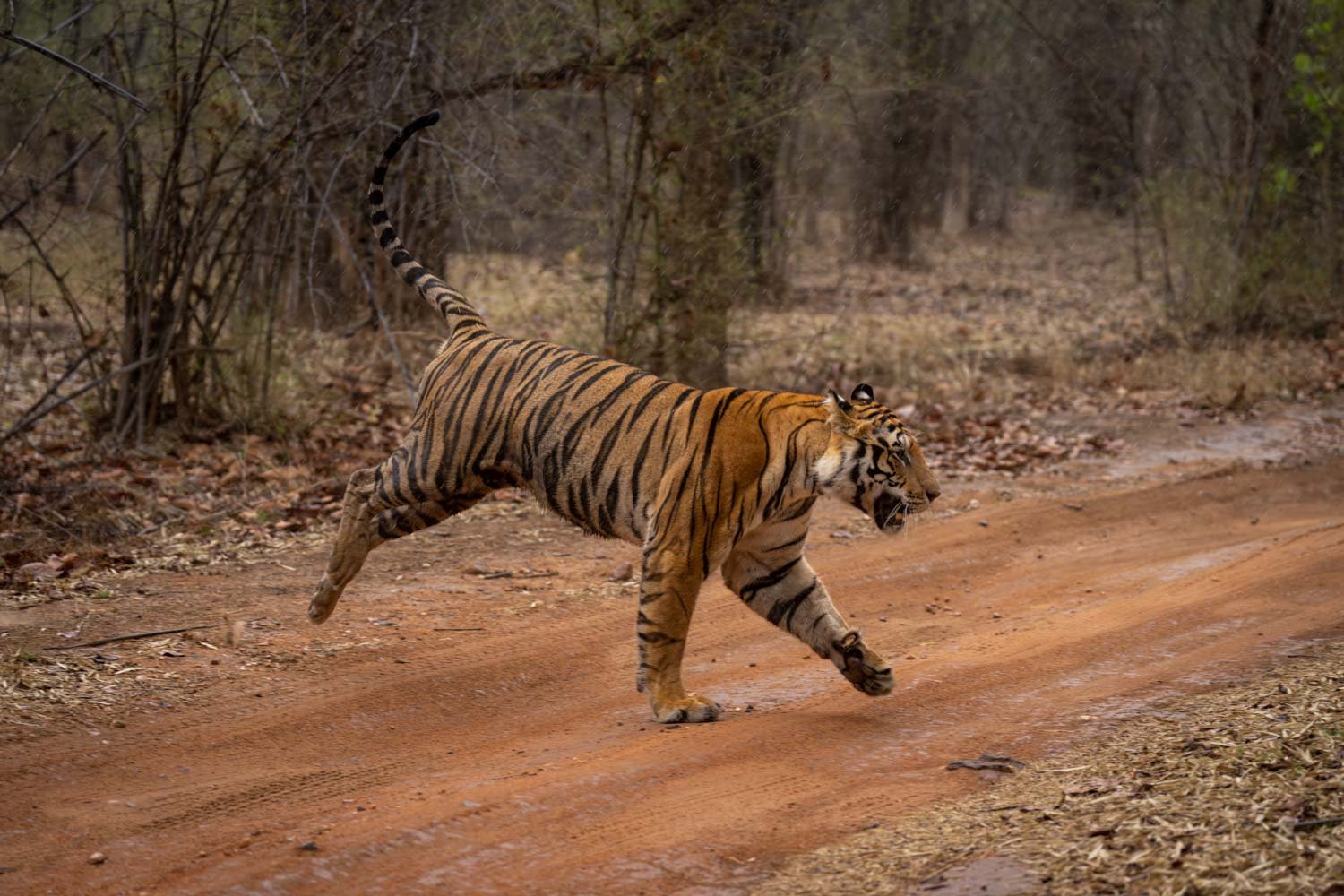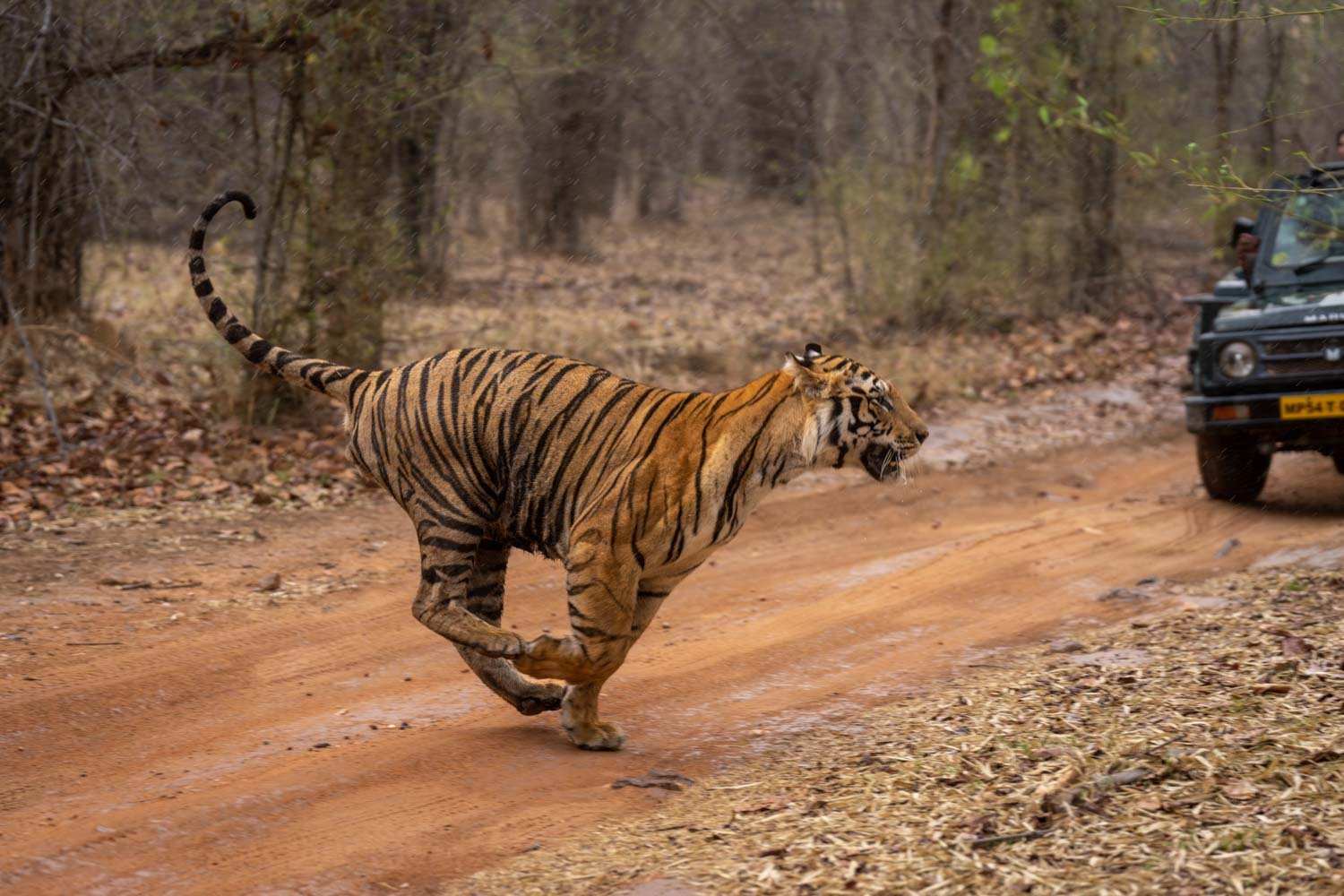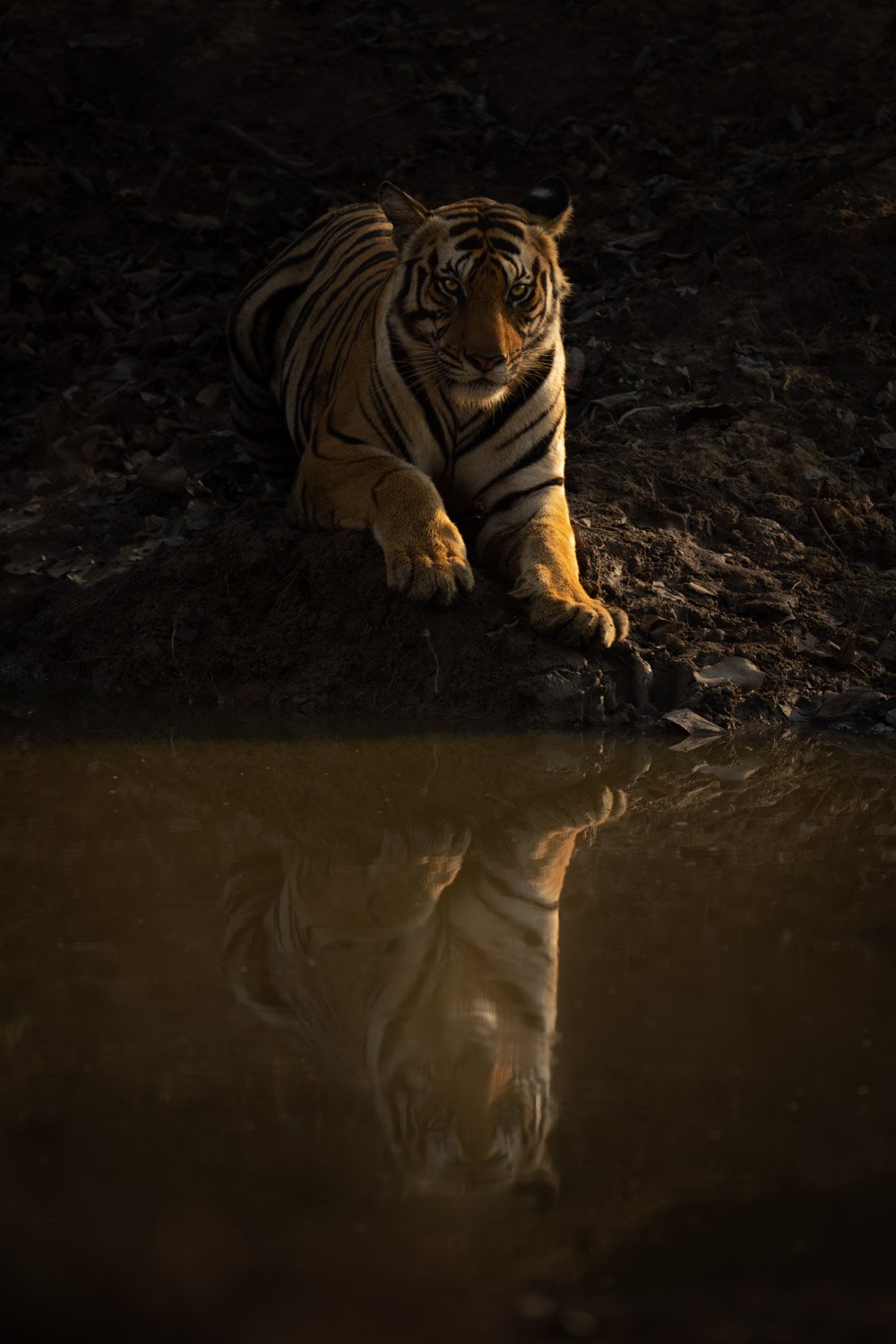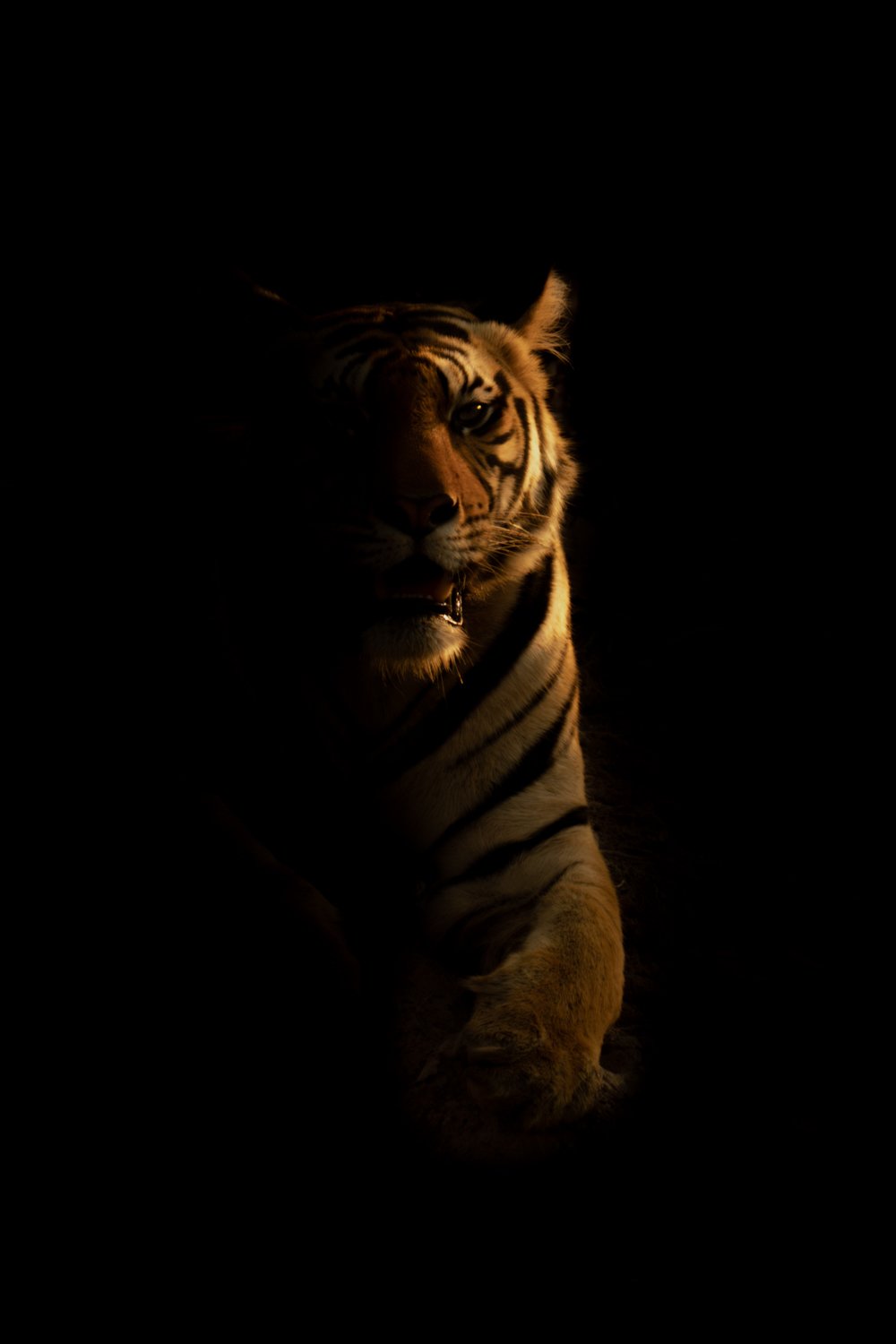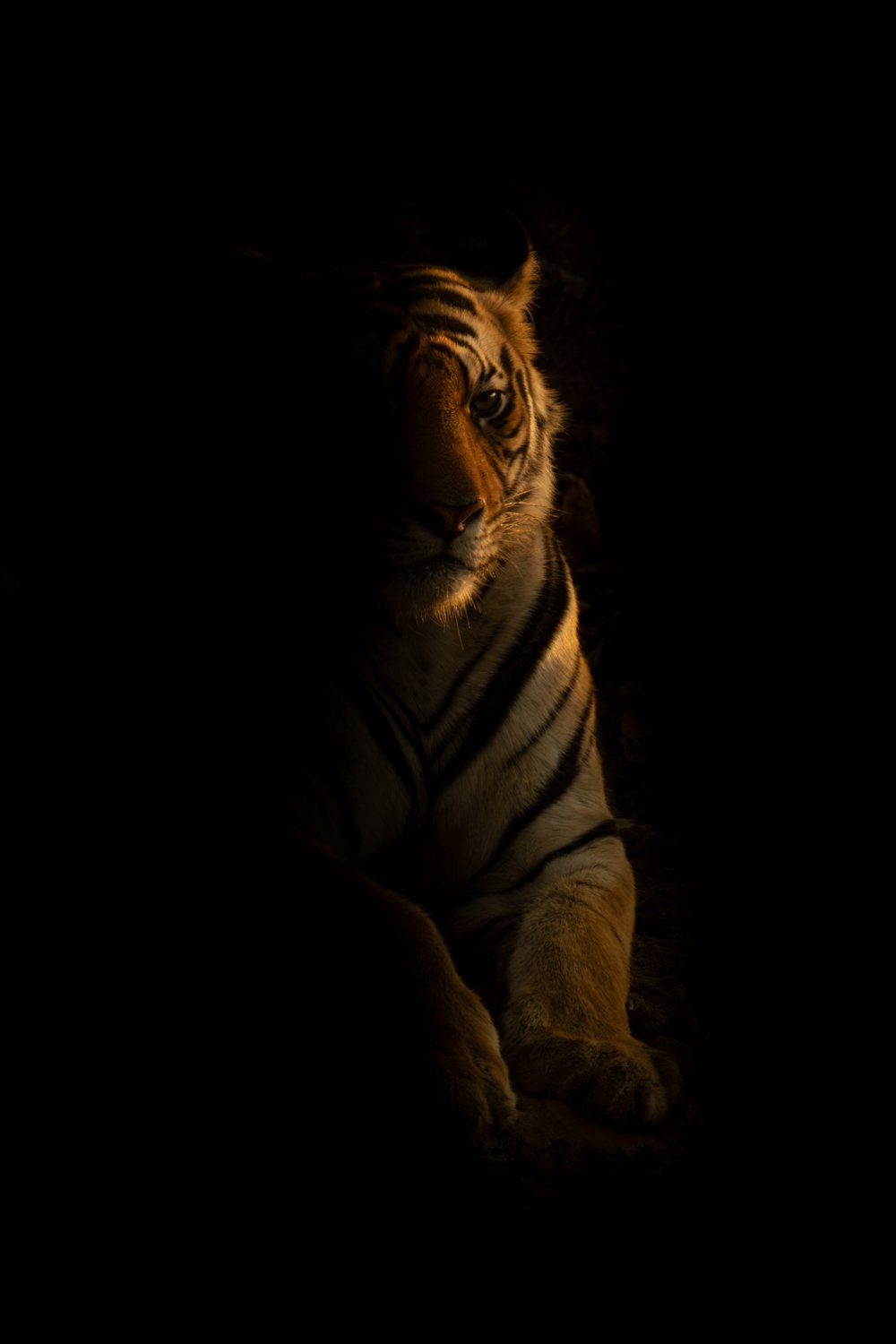Tiger, Tiger...!
Tigers, tigers everywhere…
Stealth
Hurry up and wait. That just about sums up any tiger safari. You wait to enter the park, you wait to see a tiger and you wait for it to do something interesting!
However, the payoff is that sometimes, very occasionally, you do get a great sighting and manage to take a few pictures that you’re proud of. (I’m not sure I quite managed it this time, but you can be the judge of that…!)
I’ve just come back from a week-long Exodus trip to Bandhavgarh in northern India to see the tigers with Paul Goldstein. I’ve been on a few trips with him before to Svalbard, Tadoba and Kicheche, and I keep coming back because he always gives me the best possible chance of being where the action is while challenging me to do things differently.
In the end, it turned out to be an enjoyable trip. There were five other guests (Chris, Emma, Claire, Jackie and Anna), plus Paul and an Indian I knew from Tadoba called Himanshu—or Hamish, as Chris called him! We all got along pretty well, and Paul rotated us in the vehicles so that we got to spend a bit of time with different people.
I was on my own with Paul a couple of times. On our first game drive, we had a bit of fun photographing a white-throated kingfisher fishing in a waterhole, but we didn’t see any tigers. On the second, though, we had a good, long sighting of a couple of older male cubs around a waterhole.
In total, I saw around 14 tigers, and the highlight reel included a tiger fight, a mock charge and a couple of sightings that lasted for hours!
Itinerary
It took me 24 hours to get to Bandhavgarh, including an Uber to Heathrow, a nine-hour flight to Delhi (that was delayed by an hour!), another 90-minute flight to Jabalpur and a four-hour coach ride to the Nature Heritage Resort!
While we were there, we went on seven morning and evening game drives and a couple of all-day expeditions. In between, we had curry for breakfast, lunch and dinner at the hotel. I don’t mind a good curry, and one or two of the dishes were quite nice, but by about Day Four it was all too much for me—so I switched to chips!
At least we could have fresh mango lassis whenever we wanted. I’m a big fan, and I have one every morning at home, so that was an unexpected treat.
My room was a pretty decent size, and the only problem was the power supply. The electricity cut off every now and again, leaving me in complete darkness, and at first I couldn’t charge my laptop unless one of the lights was on!
It was only a short walk to the main area—which was a good job because we had a daily wake-up call at 0430 and needed to be in the vehicles by 0500!
Sightings
Safaris in India are all about the tigers—especially if you’re with Paul, who won’t let you take pictures of anything else! In Africa, there’s such a wide range of fantastic animals to see, including the Big Five, that you get a lot more variety with a lot less hanging around!
In the first couple of days, the weather was cool and cloudy, and we didn’t have many sightings. We saw a tiger on our very first game drive, but it was lying down in the undergrowth, so we couldn’t take any pictures.
Fortunately, the weather improved in the next few days, which meant the quantity and quality of tiger sightings went up dramatically.
It also helped when we went out for the whole day. Going on tiger safaris in India is a bureaucratic nightmare. There were signs at the park entrance listing all the various dos and don’ts (including a perfume ban!), and Himanshu had to spend a couple of hours working through all the paperwork at one point!
One of the frustrations was the limited opening hours. Morning game drives had to be between the hours of 0530 and 1130, and evening game drives had to be between 1530 and 1915.
There were a couple of times when we had to abandon a tiger sighting in order to get back out of the park in time, and it was only when we went out for the full day that we could enjoy sightings at our leisure.
Full-day safaris were also less crowded because all the other vehicles had to be out of the park between 1130 and 1530!
It turned out that the most exciting moments just happened to arrive on the two full-day game drives. On the first one, I started out by getting a decent portrait of a tiger poking its head round a tree.
The Eye of the Tiger
After that, there was a tiger lying down in an open meadow and another one nearby. I was happily taking pictures when I saw one of the tigers race 50 yards towards one of our vehicles!
It was snarling as it ran, so I immediately put my camera down and stood up to see what happened. Obviously, that meant I missed my chance to take a few action shots, but I was more concerned with the safety of the group at that point!
It turned out that it was Claire who’d been the victim of the mock charge, so Paul immediately renamed the spot Claire’s Charging Point!
The other highlight came on the second all-day game drive. We saw six tigers, which was a pretty good total, but the main excitement came at the end of the afternoon.
A young, nomadic tiger had entered the territory of Pujari, the resident male. We knew where he was, so when Pujari finally arrived, it was very exciting to experience the build-up in tension.
Pujari sniffed the spot where we’d seen the other male, which apparently belonged to Tar’s family. He couldn’t pick up the scent at first and looked like he was going to go off in the wrong direction. However, he soon found what he was looking for and started stalking the other tiger.
When Pujari confronted him, he initially adopted the submissive posture, but they still roared and got up on their hind legs. It wasn’t a fight to the death, though. It only lasted a few seconds, and it was more like the scrap between Colin Firth and Hugh Grant in Bridget Jones’s Diary!
Sadly, I didn’t manage to get any shots of the fight because there was a bamboo tree in the way, so I lost focus just at the crucial moment!
I already knew there wasn’t much room between the trees, so I probably should’ve pre-focused on the slope at f/11, but I was too busy trying to capture Pujari stalking his prey!
Fortunately, the two males ran across the road later, and I photographed them both. It was only at 1/500 as I was in too much of a hurry to check my settings, but the images were sharp enough, so I was happy with that. I’d already missed the mock charge and the fight, so I would’ve been devastated to miss the chase as well!
Technique
I took both my Sony a1 camera bodies with me on the trip, and I generally put my 600mm prime on one of them and my 70-200mm zoom on the other. The tigers were often so far away that I had to use my 1.4x teleconverter with the 600mm, but I wasn’t impressed by the image quality.
In fact, I wasn’t very pleased with the photographs I took on this trip. I don’t know whether it was because I was a bit ‘rusty’ or didn’t have the right instincts, but I didn’t really come up with any ‘Wow!’ shots.
The first test was trying to photograph a couple of Indian rollers in the forest. After spending so many weeks last year in Botswana, this was ‘my bag’, so I was confident I’d get a few good bird-in-flight shots. However, I just couldn’t focus quickly enough, and I ended up with one long sequence without a single frame in focus!
All I managed to get was this portrait of a roller perched on a branch—which Paul wouldn’t even bother with…!
A Watchful Eye
When it came to the tigers, one of the problems was the amount of undergrowth beneath the trees. Bandhavgarh is heavily forested, so it was hard enough to see the tigers in the first place, but taking ‘clean’ pictures of them was almost impossible because some bush or plant always got in the way.
Predictably, Paul’s solution was to use a slow shutter speed to ‘clean up’ the foreground and background. Unfortunately, I didn’t have much success with the slow pan as I couldn’t keep the tiger’s head sharp enough. It didn’t help that I kept forgetting to switch the lens’s image stabilisation system to panning mode, but that’s no excuse. This was the best of a bad bunch.
Easy Tiger
One of the shots that I wanted to reproduce was one I took in Tadoba of a tiger in profile lying in a waterhole. I underexposed it by a couple of stops to add a bit of drama, and Paul actually selected it for the Exodus calendar that year.
However, on the one occasion when we saw a tiger in a waterhole, it wasn’t close enough, and there were too many reeds in the way. I also had to use my 1.4x teleconverter with my 600mm lens, and the results weren’t sharp enough. I’ve had problems with my teleconverter before, so after that I decided to stick with the 600mm on its own.
I had a bit more luck with the tiger Paul and I saw at a waterhole. We had some late afternoon sunshine, so we both tried to underexpose (or ‘rip it down’, as Paul would say) to get some dramatic portraits. This was one we both managed to get.
Golden Goodbye
I always try to rate all my photos on the day of each game drive, and I just about managed to stick to that on this trip. I use a five-star scale, where three stars means it’s worth selling via my stock agencies, five stars means it’s one of my top 100 shots of all time and four stars means something in between.
At the end of the trip, I only had six five-star shots—and that was being generous! However, I love to play around with my images in Lightroom, and I did manage to ‘rescue’ a few more.
Paul has a habit of showing everyone his favourite images, and it’s a good way of learning what’s possible in a given situation. However, it didn’t do much for my self-esteem when I couldn’t take any decent shots myself!
I didn’t really show my pictures to anyone, and the only compliment I got came on the plane home. One of the cabin crew had seen a tiger shot on my laptop, and he thought it was ‘breathtaking’. That’s something, I suppose, but I don’t even know which one it was…!
Verdict
I always enjoy the social side of a good group expedition, but my satisfaction is heavily geared to the quality of my pictures. If I don’t take many good ones, it does get me down a bit.
Having said that, it’s always good practice, and I try to learn as much as I can from Paul—as well as having a few laughs!
I don’t think any of my pictures from this trip are going to win any awards, but it’s all part of the learning process.
I’m off to Africa again in August/September to see the Mara river crossing, and I have another trip planned in October to see the pumas in Torres del Paine National Park, Chile. Finally, I’ve just booked another outing in January with Paul. This time, I’m going back to a couple of his camps at Kicheche in the Masai Mara.
The first time I went there with him, I saw five cheetah kills in a week, so let’s hope I see something similar! I can’t wait to try out my Sony gear on a 70 mph chase…
Species
Animals (14)
Bengal tiger
Chital
Frog
Golden jackal
Hare
Indian elephant
Indian gaur
Indian grey mongoose
Monitor lizard
Northern plains gray langur
Rhesus macaque
Sambar deer
Tree snake
Wild boar
Birds (40)
Ashy drongo
Blyth's paradise flycatcher
Brahminy starling
Brown-headed barbet
Chestnut-shouldered petronia
Crested serpent eagle
Crow
Egyptian vulture
Eurasian thick-knee
Golden oriole
Great egret
Grebe
Green bee-eater
Grey hornbill
Indian pitta
Indian roller
Indian vulture
Jungle fowl
Lesser adjutant stork
Lesser golden-backed woodpecker
Lesser whistling duck
Little cormorant
Crested honey buzzard
Oriental magpie robin
Indian peafowl
Racket-tailed drongo
Red-naped ibis
Red-wattled lapwing
Red spurfowl
Rosing parakeet
Ruby shelduck
Sirkeer malkoha
Spotted dove
Spotted owlet
Tickle’s blue flycatcher
White-breasted kingfisher
White-necked stork
Woolly-necked stork
If you’d like to order a framed print of one of my wildlife photographs, please visit the Prints page.
If you’d like to book a lesson or order an online photography course, please visit my Lessons and Courses pages.


